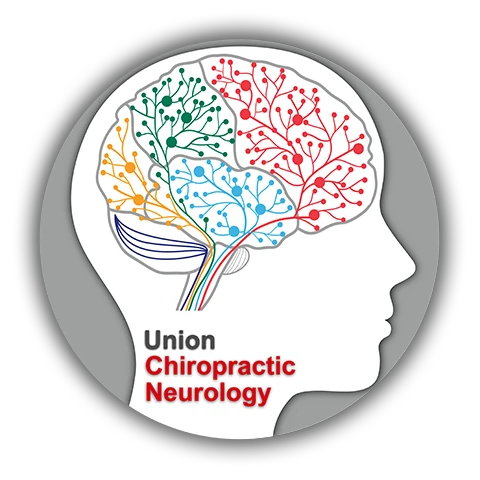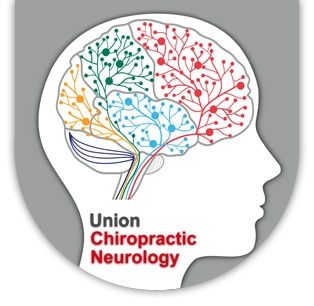What Is Chiropractic Neurology In Monroe NC?

A special thanks to Dr. Louis Kerr DC, DACNB, a Monroe, NC Chiropractor, for providing this article.
What Is A Chiropractic Neurologist?
Let's start this conversation by talking about chiropractic. The history of chiropractic began in 1895 when Daniel David Palmer (DD) of Iowa performed the first chiropractic adjustment on a partially deaf janitor, Harvey Lillard. While Harvey was working in DD’s office, he bent over to empty the trash can and DD noticed that Harvey’s spine seemed ”out of alignment”. He asked Harvey what had happened, and he replied, "I moved the wrong way, and I heard a 'pop' in my back, and that's when I lost my hearing." DD, who was involved in natural healing, had Lillard lie face down on the floor and proceeded with an “adjustment”. An adjustment is a term used by Chiropractors to describe the spinal treatment. The next day, Harvey told DD, "I can hear the sounds from the street”. This experience led DD to open a school of Chiropractic two years later. Chiropractic's early philosophy was rooted in a natural approach to restoring proper function that was being interfered with by boney misalignments. Although these constructs were readily demonstrable, they were not amenable to the “scientific method” as DD had stumbled onto something that had not yet been demonstrated by research and study. By scientific and “Medical” standards, if it had not been researched and proven to be repeatable in a research facility it was not valid. The Chemical prescribers and dentist/surgeons were the self-proclaimed gatekeepers of "appropriate treatment" of human ailments at the time.
In 1896, Palmer's first descriptions and underlying philosophy of chiropractic echoed Andrew Still's principles of osteopathy established a decade earlier. Both described the body as a "machine" whose parts could be manipulated to remove interference and restore proper function due to handling the cause of Disease and produce a drugless cure. Both professed the use of spinal manipulation on joint dysfunction/subluxation to improve health. Palmer distinguished his work by noting that he was the first to use short-lever HVLA (high velocity low amplitude) manipulative techniques using the spinous process and transverse processes as mechanical levers. He described the effects of Chiropractic spinal manipulation as being mediated primarily by the nervous system.
Despite the similarities between Chiropractic and Osteopathy, the latter's practitioners sought to differentiate themselves by seeking licensure and inclusion in the Medical pseudoscience's to regulate the profession, calling chiropractic a "bastardized form of osteopathy". Fortunately, the Chiropractic leaders did not follow suit as the Medical profession attempted to squash Chiropractic and Osteopathy. In 1907 in a test of a new Osteopathy law, a Wisconsin-based Chiropractor was charged with practicing Osteopathic medicine without a license. Practicing medicine without a license led to many Chiropractors, including D.D. Palmer, being jailed. Ironically, the Palmers legal defense of Chiropractic consisted of the first Chiropractic textbook 'Modernized Chiropractic' published in 1906. Chiropractors won their first test case in Wisconsin in 1907. Prosecutions instigated by state medical boards became increasingly common and in many cases they were successful. Thankfully, Chiropractors conducted political campaigns to secure separate licensing statutes, eventually succeeding in all fifty states, from Kansas in 1913 through Louisiana in 1974.
A conference sponsored by the National Institutes of Health in 1975 spurred the development of Chiropractic research. The American Medical Association called chiropractic an "unscientific cult" and boycotted it until losing a 1987 antitrust case. For most of its existence, chiropractic has battled with the practice of medicine, sustained by the Chiropractic profession’s basic neurologic concept of correcting the subluxations that cause human ailments. It is a fact that this occurs in people and causes disease, whether the Medical profession chooses to ignore these conditions and allow them to perpetuate as handling them would decrease revenues or if it is by ignorance, I will not venture a guess, perhaps both? We know the medical community including Osteopathy and physical therapists, along with the pharmaceutical companies have always regarded Chiropractic as well as all the natural healing arts, a threat to their economy. By the mid-1990s there was a growing scholarly interest in chiropractic and its non-chemical, non-surgical approach to natural Health care.
To become a Chiropractor, first, you have to go to an accredited undergraduate school and acquire knowledge in the basic sciences, math, physics, and anatomy/physiology. Most chiropractic schools require at least three years of undergraduate studies in these areas. Once you have been accepted and matriculated in Chiropractic school a person receives about 3,000 contact hours of study in human anatomy and physiology until you have pretty much studied the entire body similar to a medical school. However, instead of studying surgery and pharmacology Chiropractic schools teach their students another 1500 contact hours on the negative effects of the chemotherapies so common in our society, how to examine the body for dysfunction of the natural God-given systems, and to intervene to increase and restore the function of those systems. This includes the classes that teach the application of specific Chiropractic technique and the restoration of proper “nerve flow”. This model of dysfunction and restoration of function is based on the concept of a “subluxation”, people frequently liken this to the bone out of place understanding of what chiropractic is and what they do.
Personally, I never subscribed to this idea as none of the anatomy and Physiology books that I studied ever described this as being a phenomenon and my understanding of bones was that they provided support along with the ligaments to create the human skeletal system. What can and does happen is that joints will lose their function due to one of the three T's, thoughts, traumas, or toxins (including pharmaceutical chemicals) that will cause an inappropriate function of the nervous system. Therefore, chiropractors examine and manipulate the spine, to correct subluxations and improve joint function. This is a bottom-up treatment approach providing therapy to the lower part of the nervous system to make a change in the upper part of the nervous system. Processing of information that is non-reflexive happens in the brain and a subluxation will change the information going into and coming out of your central processing unit, the Brain.
After someone completes their chiropractic training and graduates, they have the option of specializing in an area of care such as Pediatrics, orthopedics, neurology, etc. A Chiropractic neurologist has taken the courses and passed a board that governs that area of expertise. Those courses consist of at least 350 hrs. of study in advanced neuroscience concepts of examination, treatment, and rehabilitation. I received my training at the Carrick Institute located in Cape Canaveral FL. I found it to be a demanding and yet rewarding course of study that greatly increased my skill set and ability in the treatment of maladies that befall humankind.
What Is Neurology In Monroe NC?
Neurology is the branch of Chiropractic or biology that deals with the anatomy, functions, and organic disorders of the nerves and nervous system. Neurology (from Greek: νεῦρον (neûron), "string, nerve" and the suffix -logia, "study of") deals with the diagnosis and treatment of all categories of conditions and disease involving the central and peripheral nervous systems (and their subdivisions, the autonomic and somatic nervous systems), including their coverings, blood vessels, and all affected tissue, such as muscles.
Neurology, the academic discipline, began between the 15th and 16th centuries with the work and research of many neurologists such as Charles Bell, Moritz Heinrich Romberg, Duchenne de Boulogne, William A. Hammond, Jean-Martin Charcot, and John Hughlings Jackson. Jean-Martin Charcot is considered one of the fathers of neurology. Charles Scott Sherrington was a pioneer who expanded our understanding of some of the founding fundamentals regarding neuroscience in the early 20th century.
Neurologic disorders can affect the central nervous system (brain and spinal cord), the peripheral nervous system, the autonomic nervous system, and then cause symptoms in any part of the body as all are controlled in total or in part by these systems.
It is of interest to note that there is some overlap between the fields of neurology and psychiatry. Neurologic disorders often have psychiatric manifestations, such as poststroke depression, depression, and dementia associated with Parkinson's disease, mood and cognitive dysfunctions in Alzheimer's disease, and Huntington disease, to name a few. Hence, there is no sharp distinction between neurology and psychiatry on a biological basis. In the medical model, the dominance of psychoanalytic theory in the first three-quarters of the 20th century has since been largely replaced by a focus on pharmacology. Despite the shift to a medical model, brain science has not advanced to a point where medical scientists or clinicians can point to readily discernible pathologic lesions or genetic abnormalities that in and of themselves serve as reliable or predictive biomarkers of a given mental disorder. They cannot and do not attempt to understand the concepts of the functional model of conditions treated by Chiropractic neurologist and they will continue to fall short in their ability to productively treat the greater portion of humankind. The pursuit of a better quality of life through chemotherapy has repeatedly been shown to be lacking and frequently dangerous.
The brain, the physical anatomic structure within the cranial vault is the main structure of the mind. The entire nervous system creates the full construct of what we understand as the mind ex. gut feeling. This can better be understood when we realize that our mind is a conglomerate of all our awareness's, conscious and subconscious, past, present, and future. To have a disturbance of the physicality of the anatomical residence of awareness will change the perceptions and understanding of our existence, our reality, and therefore affects what we call "mind". A simple example of this phenomenon would be a patient who presents with depression due to long-term neurologic dysfunction. Following an examination and treatment when the condition is resolved the patient has a new attitude, a new hope for the future, a lessening or resolution of the "depression". Did I treat the "depression"? The mind? No, I treated the physical condition that was contributory to the person’s mind being in a state of depression, usually secondary to a loss of hope(thought) for the resolution of what had befallen them. Although mental illnesses are believed by many to be neurologic disorders affecting the central nervous system, traditionally they are classified separately and treated by psychiatrists. In a 2002 review article in the American Journal of Psychiatry, Professor Joseph B. Martin, Dean of Harvard Medical School and a medical neurologist by training, wrote, "the separation of the two categories is arbitrary, often influenced by beliefs rather than proven scientific observations. And the fact that the brain and mind are one makes the separation artificial anyway".
There is an emerging field of neurologic enhancement in the medical field that highlights the potential of therapies to improve such things as workplace efficacy, attention in school, and overall happiness in personal lives. This is a small step in the correct direction and the first ray of hope that the profession may come into the 21st century. However, this field has also given rise to questions about neuroethics (they have ethical questions regarding if it's appropriate to actually get people well) and the psychopharmacology of lifestyle drugs have negative effects on neurology.
So, What Is A Chiropractic Neurologist?
Professor Frederick (Ted) Carrick DC, Ph.D., MS-HPEd, is considered the father of Chiropractic Neurology. He attended Canadian Memorial Chiropractic College and in 1978 during an internship he began utilizing the principles and researched findings of Neuroscience in the clinical setting. Graduating in 1979 he began what has become a lifelong purpose to teach the skills he mastered to others interested in applying clinical neuroscience. He also founded his flagship graduate school, the Carrick Institute in 1979 which is the premier source of instruction in applied neuroscience training.
A Chiropractic neurologist is a physician specializing in neurology and trained to investigate, diagnose, and treat neurologic disorders. Neurologists may also be involved in clinical research, clinical trials, and basic or translational research. While neurology is a non-surgical, non-chemical specialty, its corresponding surgical specialty is neurosurgery, its chemical specialty with the application of chemotherapeutics has shown little if any long-term efficacy.
A Chiropractic Neurologist is a person who has taken thousands of hours of training regarding human frame and function and passed the appropriate boards that accredit competency in these areas of study. Then, followed that up with hundreds of more hours studying the clinical examination, treatment, and application of evidenced-based neuroscience from an accredited institution and the most elite and current journals available on the subject. Then, sat the appropriate board and passed, testing competency in this area of study. You see a Chiropractic Neurologist is a highly trained and skilled individual in the clinical application of neuroscience to treat the neurologic conditions confronting humankind.
Many neurologists also have additional training or interest in one area of neurology, such as stroke, epilepsy, neuromuscular, sleep medicine, pain management, movement disorders, head pain, childhood developmental disorders, traumatic brain injury, vestibular rehabilitation, and more. Some of these programs lead to what is known as a Fellowship, a subspecialty in an area of additional training. Many neurologists work part-time in training the next group of Chiropractors to be neurologists and in research, in addition to treating patients.
Some of the commonly encountered conditions treated by neurologists include headaches, radiculopathy, neuropathy, stroke, dementia, seizures and epilepsy, Alzheimer's disease, attention-deficit/hyperactivity disorder, infertility, Parkinson's disease, Tourette's syndrome, multiple sclerosis, head trauma, sleep disorders, and neuromuscular diseases to name a few.
Following a consultation so that the neurologist can gain a clear understanding of the patients’ concerns and desires, the neurologist reviews the patient's health history with special attention to the current condition. The patient then receives a neurologic exam of a focused or comprehensive extent. Typically, the exam tests vitals, mental status, vision, hearing, gait, balance, cognition, coordination, memory, gaze, reflexes, strength, sensation, skeletal function, and more. This information helps the neurologist determine whether the problem exists in the nervous system and the clinical localization. Localization of the level of the lesion is the key process by which neurologists develop their differential diagnosis and guide which and quantity of therapies needed. Further tests may confirm a diagnosis and ultimately guide therapy and appropriate management.
In some instances, neurologists may order additional diagnostic tests as part of the evaluation. Commonly employed tests in neurology include imaging studies such as computed axial tomography (CAT) scans, magnetic resonance imaging (MRI), and ultrasound of major blood vessels of the head and neck. Neurophysiologic studies, including electroencephalography (EEG), needle electromyography (EMG), nerve conduction studies (NCSs), and evoked potentials can also be utilized. Diagnostic imaging may be indicated and a referral to a neurosurgeon may occur if a hard lesion is suspected.
Treatment options vary depending on the neurologic problem. The therapies utilized in the neurologist's office are primarily of the receptor-based type. What this means is that chemicals and surgery are not utilized. The neurologist will understand the areas of decompensation recognized from the examination and consultation and design a therapy regime to either strengthen those specific areas or strengthen a parallel area of the neuraxis that is similar in its function to sidestep the area of lesion. These therapies can utilize vision stability, chair rotations, sound, touch, light therapy, laser, muscle therapies, stretching, vibration, motion tasks, balance training, manipulation, acupuncture, the playing of coordination games or online gaming tasks, and more.
If you find yourself suffering and you feel you have exhausted all treatment possibilities or you have been told there is nothing else to do or "it's all in your head" and you have not tried seeking the opinion of a Chiropractic neurologist I suggest you do so at your earliest opportunity. A list of neurologists can be found at ACNB.org or you can give me a call and I will find one for you.
It is not OK to have a body that is not functioning properly, symptoms are your way of alerting you to a problem. Let us take headaches as an example. If you have had one or two headaches in the past twelve months this may be considered normal and I would agree that an occasional headache is not a large concern. If you are having frequent headaches this is a warning sign that something is wrong and should be looked at. I think this is a good time to point out the use of the words normal and common. Headaches are the most common symptom complaint however there is nothing normal about headaches. I have people present to the office and state that they have the normal headaches that people have. That is when I have a conversation with them regarding the use of common and normal. If headaches are creating a difference in your abilities to conduct daily routines depending on if it is a "bad day" this should concern you, it would certainly concern me. If headaches could interfere with your quality of life like playing with your kids, earning an income, or free time then it would be unacceptable to allow this to continue.
Let us use an analogy, have you ever had a pebble in your shoe? That pebble is irritating a nerve and the nerve irritation signals to your brain "Houston, we have a problem". Now, there is a number of different therapies that you could attempt to handle the nerve pain from that pebble. You could get a surgical consult to see if removing a piece of your foot would allow the pebble to fit in your shoe better or, have your nerve cut so you don't feel the pebble. You could go to the pharmacy and get a bottle of pebble ease, take two every four hours until the pain resolves. Or, perhaps some psychotherapy to help you with your "pebble issues". Obviously, these are ridiculous examples of inappropriate ways to handle your foot pain caused by the pebble irritation of your foot however this ridiculous behavior happens continuously in our "Medical" model of treatment.
The correct solution would be to sit down and remove the irritation from your nerve, remove the pebble and handle the problem. If you are suffering you need to find the person near you who is the expert at handling pebbles. Chiropractic neurologists are just that and so much more.
By Dr. Louis Kerr DC, DACNB
https://www.fncoc.com/
Monday
8:30am - 1:00pm
3:00pm - 6:00pm
Tuesday
2:00pm - 6:00pm
Wednesday
8:30am - 1:00pm
3:00pm - 8:00pm
Thursday
Closed
Friday
8:30am - 1:00pm
3:00pm - 6:00pm
Saturday & Sunday
Closed
Union Chiropractic Neurology
3513 W Hwy 74 Suite B
Monroe, NC 28110


